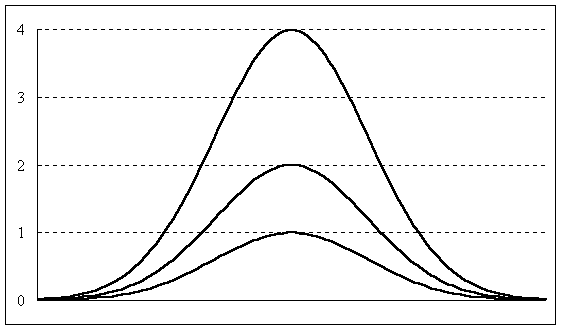

Extensive mathematical, statistical, Bessel, and logic functions.Estimates can contain formulas and constraints.Transition (14): Sigmoid Asc, Sigmoid Desc, GaussCum Asc, GaussCum Desc, LorentzCum Asc, LorentzCum Desc, LgstcDose Rsp Asc, LgstcDoseRsp Desc, LogNormCum Asc, LogNormCum Desc, ExtrValCum Asc, ExtrValCum Desc, PulseCum Asc, PulseCum Desc.General Peak (12): Erfc Pk, Pulse Pk, LDR Pk, Asym Lgstc Pk, Lgstc pow Pk, Pulse pow Pk, Pulse Wid2 Pk, Intermediate Pk, Sym Dbl Sigmoid, Sym Dbl GaussCum, Asym Dbl Sigmoid, Asym Dbl GaussCum.Statistical (31): Log Normal Amp, Log Normal Area, Logistic Amp, Logistic Area, Laplace Amp, Laplace Area, Extr Value Amp, Extr Value Area, Log Normal-4 Amp, Log Normal-4 Area, Eval4 Amp Tailed, Eval4 Area Tailed, Eval4 Amp Frtd, Eval4 Area Frtd, Gamma Amp, Gamma Area, Inv Gamma Amp, Inv Gamma Area, Weibull Amp, Weibull Area, Error Amp, Error Area, Chi-Sq Amp, Chi-Sq Area, Student t Amp, Student t Area, Beta Amp, Beta Area, F Variance Amp, F Variance Area, Pearson IV.Chromatography (8): HVL, NLC, Giddings, EMG, GMG, EMG+GMG, GEMG, GEMG 5-parm.Spectroscopy (18): Gauss Amp, Gauss Area, Lorentz Amp, Lorentz Area, Voigt Amp, Voigt Area, Voigt Amp Approx, Voigt Amp G/L, Voigt Area G/l, Gauss Cnstr Amp, Gauss Cnstr Area, Pearson VII Amp, Pearson VII Area, Gauss+Lor Area, Gauss*Lor, Gamma Ray, Compton Edge.
Peak width fityk software#
The Fitting Functions and Features for PeakFit by Systat Software are shown below: Only PeakFit offers so many different methods of data manipulation.

And, PeakFit even has a digital data enhancer, which helps to analyze your sparse data. AI Experts throughout the smoothing options and other parts of the program automatically help you to set many adjustments. PeakFit also includes an automated FFT method as well as Gaussian convolution, the Savitzky-Golay method and the Loess algorithm for smoothing. This smoothing technique allows for superb noise reduction while maintaining the integrity of the original data stream. With PeakFit’s visual FFT filter, you can inspect your data stream in the Fourier domain and zero higher frequency points - and see your results immediately in the time-domain. PeakFit Offers Sophisticated Data Manipulation. PeakFit’s graphical placement options handle even the most complex peaks as smoothly as Gaussians. Each placed function has “anchors” that adjust even the most highly complex functions, automatically changing that function’s specific numeric parameters. Peaks=np.delete(peaks, np.If PeakFit’s auto-placement features fail on extremely complicated or noisy data, you can place and fit peaks graphically with only a few mouse clicks. #,w,f = get_height_width_floro2(maxtab,mintab,y) W,f = get_height_width_floro(peaks,peak_height,y) Peak_width=peak_widths(y,peaks,rel_height=1) Prominence_data=peak_prominences(y,peaks,wlen=15) Prominences = peak_prominences(y,peaks,wlen=15) peaks,peak_height = find_peaks(y,wlen=15,plateau_size=(0,2),distance=5)
Peak width fityk code#
Here there are peaks with very small peak height, which I want to excludeīelow code is a part of my original script that I am using for finding peak and it's properties. I have tried using variable parameters but it didn't turn up to be as good as desired. I understand prominences or thresholds can be set but I want it to be a good variable. height in a given signal, so that some small peaks get excluded. Another picture to show the same problem.Īnother thing is I want to give some minimum height for a peak but which is variable and depends on signal or a peak with max. if the bases are not good, height(which is prominence) won't be correct either. But you can see for few peaks the bases are not good. Here I have marked peaks in green color and estimated right and left bases (these are left and right index of width) in red. But there are signals with overlapped peaks, for whom /peakwidth is not finding correct bases of peaks, thus wrongly estimating width and height of few peaks. I am interested in calculating the width and height of peaks in different signals.


 0 kommentar(er)
0 kommentar(er)
